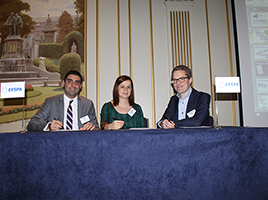The new year is a time to look forward, but also a good opportunity to reflect back. 2020 was a year of adapting: to new rules and regulations, to new ways of working, and for many organisations, to legacy technology limitations. 2021 is the perfect time to rebuild your technology stack and modernize processes for competitive advantage.
Here are a few things we see coming in the next year.

Titanic Move to the Cloud
The global shut down allowed all companies to review their technology approach and specifically at the agility needed in the current landscape. Many companies were not able to react or implement change quickly, whilst others were. What were the key differences? Cloud and the ability to access mission-critical business software from anywhere at any time. Flexible technology in many cases would have provided the agility to change and react quickly, illustrating the need for modern solutions that allow for response to changing business conditions and future demands. We’ll see many boards asking these questions to IT directors and CIOs and asking for a refreshed IT or business strategy to ensure agility in the future.
Improved User Experience
Manufacturers are not known for being early technology adopters. While this does delay the benefits organisations can achieve from modern ERP systems, it provides the chance to benefit from the experiences of those who have moved to the cloud before them. ERP vendors continue to improve the user experience, so manufacturers making the move now can benefit from the smaller learning curve and faster time to value.
Part of the improved experience will include more organisations choosing industry-specific software for increased agility and flexibility. These systems come with out-of-the-box functionality such as forecasting and demand planning, tracking and traceability, and recipe and least-cost formulation capabilities for food and beverage manufacturers. They also more easily connect with Industry 4.0 and product lifecycle management (PLM) technologies, which is important as these systems become more commonplace in the industry.
Remote Implementations as the New Normal
The past year has created the expectation of moving ahead, not slowing down. The ability to implement ERP software remotely has opened up new possibilities, allowing for all or mostly remote implementation teams, built from expanded geographies, and specialized talent. Even after shutdowns end and vaccines become widespread, many businesses will still take a slow approach to return to the workplace, if they return at all. The silver lining is that the delivery team can strike a healthy balance between travel and remote working and the end customer sees a significant reduction in project expenses, which can be repurposed into other budgets.
Experienced implementation teams have built upon their technology competency and incorporated novel approaches to robust communication and collaboration, to allow it to feel like the team is right there. I predict that 2020 will have a lasting effect on how services are consumed going forward.
The Art of the Possible
In an environment where it has been extremely difficult to create relationships, we have seen many ERP discussions become transactional. This is difficult to avoid when you do not have the opportunity for a physical presence. Decisions take longer and are more challenging, however, it has also made the space far more competitive. I predict decision-cycles in 2021 to be longer, more competitive, include far more vendors, and have higher customer expectations. A successful vendor in 2021 will accept this new landscape and adapt to embrace it.
While this past year has shown that it’s incredibly hard to predict accuracy when looking at the future, there’s no denying that cloud, digital transformation, and Industry 4.0 will continue to dominate the conversation, and experience will be the goal of optimization strategies. It will be exciting to see how the industry evolves as manufacturers begin or continue their transformation programs through the next year.





